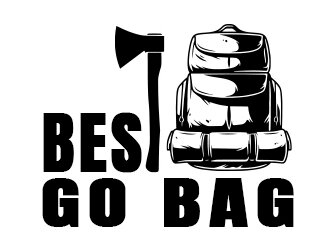Don’t let anyone fool you. Banks are in it for the money. Like every other business, they need to make money in order to survive.
Often we think of banks only as a safe place to keep our money and earn some interest. Or perhaps to finance a major purchase or provide a loan so we can pay off a debt.
All that is fine, but the folks who run banks have other goals in mind. Like making a profit when they finance those purchases and hand out those loans. And even more importantly, investing the money you and I ask them to hold for us in order to build up their reserves.
Seems like a relatively easy way to not only stay solvent, but also make a tidy profit. We don’t often see bank presidents in t-shirts and jeans, and driving pre-owned cars.
Largest Bank to Fail in 15 Years
So, when a bank collapses as Silicon Valley Bank (SVB) did recently, it’s news. Big news. Some of the most powerful technology investors in the world were among the bank’s clients.
SVB was the largest U.S. bank to fail since the financial crisis of 2008. Two days later, federal regulators also took over New York’s Signature Bank, known for its dealings in the crypto market. Both banks are now controlled by the Federal Deposit Insurance Corporation (FDIC).
Do you recall the scene in the movie It’s a Wonderful Life when the Bedford Falls townsfolk rushed to the Bailey Building and Loan to withdraw their money?
That’s basically what occurred at SVB when nervous bank customers withdrew tens of billions of dollars’ worth of deposits they’d made. Except this time, George Bailey wasn’t there to talk them into settling for less until he could straighten out the mess.
SVB Soared as Tech Thrived
This latest financial news came as a shock to many. SVB, based in Santa Clara, California, was able to compete with larger banks because it had wealthy clients.
Including venture capital firms and technology startups. Clients included Vox Media, Roblox, and Roku.
Jared Shaw is a senior analyst at Wells Fargo. He told NPR, “They are able to provide all the products and services any of these sophisticated technology companies, as well as these sophisticated venture capital and private equity funds, would need.”
During the COVID-19 pandemic, SVB thrived because tech companies were thriving. It’s estimated those customers deposited more than $100 billion in SVB.
Higher Interest Rates Spelled Doom
Interest rates were low at the time, so SVB invested significant amounts of money in long-term U.S. Treasury bonds.
Those are normally nice, safe investments if interest rates remain low. But if suddenly inflation rears its ugly head and the Fed repeatedly raises interest rates, then not so much. They only pay out in full when they’re held to maturity. They lose value if interest rates rise.
The Fed’s consistent interest rate increases the last couple of years may be good for reining in inflation. But they’re not good for the value of government bonds.
Even with the problem of having to sell those bonds at a discount, SVB could have survived. Except for one thing. The technology sector took a downward turn in recent months. So, tech companies began withdrawing their deposits.
FDIC Takes Over
With no George Bailey to convince tech companies to exercise patience, there was only one way for SVB to honor those withdrawals.
And that was to sell a portion of its bond holdings. When they did that – at a loss of close to $2 billion – more of the bank’s clients became worried and withdrew their money as well.
In a matter of hours, SVB’s stock shares plummeted by more than 60% and their goose was cooked. The FDIC took over.
What happens when highly regarded institutions such as SVB collapse? People get anxious. Even when their bank is not heavily supported by the tech sector and even when a vast majority of the bank’s investments are not in U.S. Treasury bonds.
Officials Try to Assure Jittery Investors
Other banks taking major hits included First Republic Bank and Western Alliance Bancorp. Even JPMorgan, Wells Fargo, and Bank of America were negatively affected.
And it’s not just the big boys suffering. Smaller bank officials are sweating this out as well. Shaw called the situation “a fear that has gripped the market, and is sort of self-perpetuating at this point.”
Morgan Stanley analysts are trying to ease the tension and assure Americans they shouldn’t worry.
They recently wrote in a communication to clients, “We do not believe there is a liquidity crunch facing the banking industry.” President Joe Biden also chimed in with, “Your deposits will be there when you need them.”
Preparedness = Peace of Mind
Here at 4Patriots, we don’t provide financial advice. We limit recommendations to the preparedness arena.
But it’s no secret that the better prepared we are, the better we’ll be able to handle any crisis. Be it the result of extreme weather, food shortages, power outages, water contaminations, or economic downturns.
It’s up to each of us to become self-sufficient. The less dependent we are on the government, the better off we’ll be.
Take stock of your preparedness provisions and fill in the gaps when you can. That will give you a long-term advantage. What’s the immediate advantage? Peace of mind. A bank might collapse, but you won’t.

